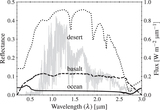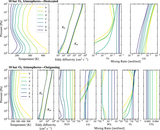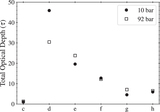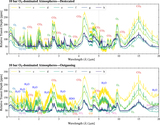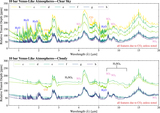Image Details
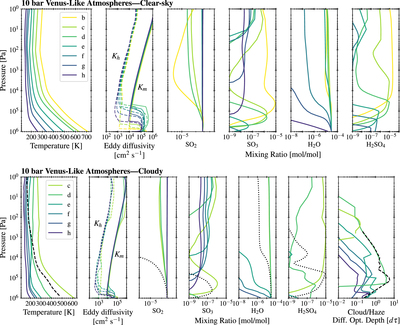
Caption: Figure 6.
Converged structures of the 10 bar clear-sky (upper panel) and cloudy (lower panel) Venus-like TRAPPIST-1 atmospheres. Note: b is not included in the cloudy case, as aerosols were not formed. The Venus International Reference Atmosphere (VIRA) temperature structure is shown in the cloudy panel (black dashed line). The 92 bar atmospheres are not shown here but show a structure similar to the 10 bar cases. Here we show H2O, SO2, SO3, and H2SO4 gases only, being the most relevant to climate and cloud formation. The bulk gases CO2 and N2 are 96.5% CO2 and 3.5% N2. With a (clear-sky) Venus-like atmosphere, TRAPPIST-1 b may exhibit surface temperatures in excess of Venus (due to higher instellation) and is too hot to form sulfuric acid aerosols in our model, even though it was most effective at forming high-altitude H2SO4 vapor. Sulfur dioxide survives more readily in these atmospheres, due to the lower MUV–NUV flux compared to the Sun.
Copyright and Terms & Conditions
© 2018. The American Astronomical Society.


